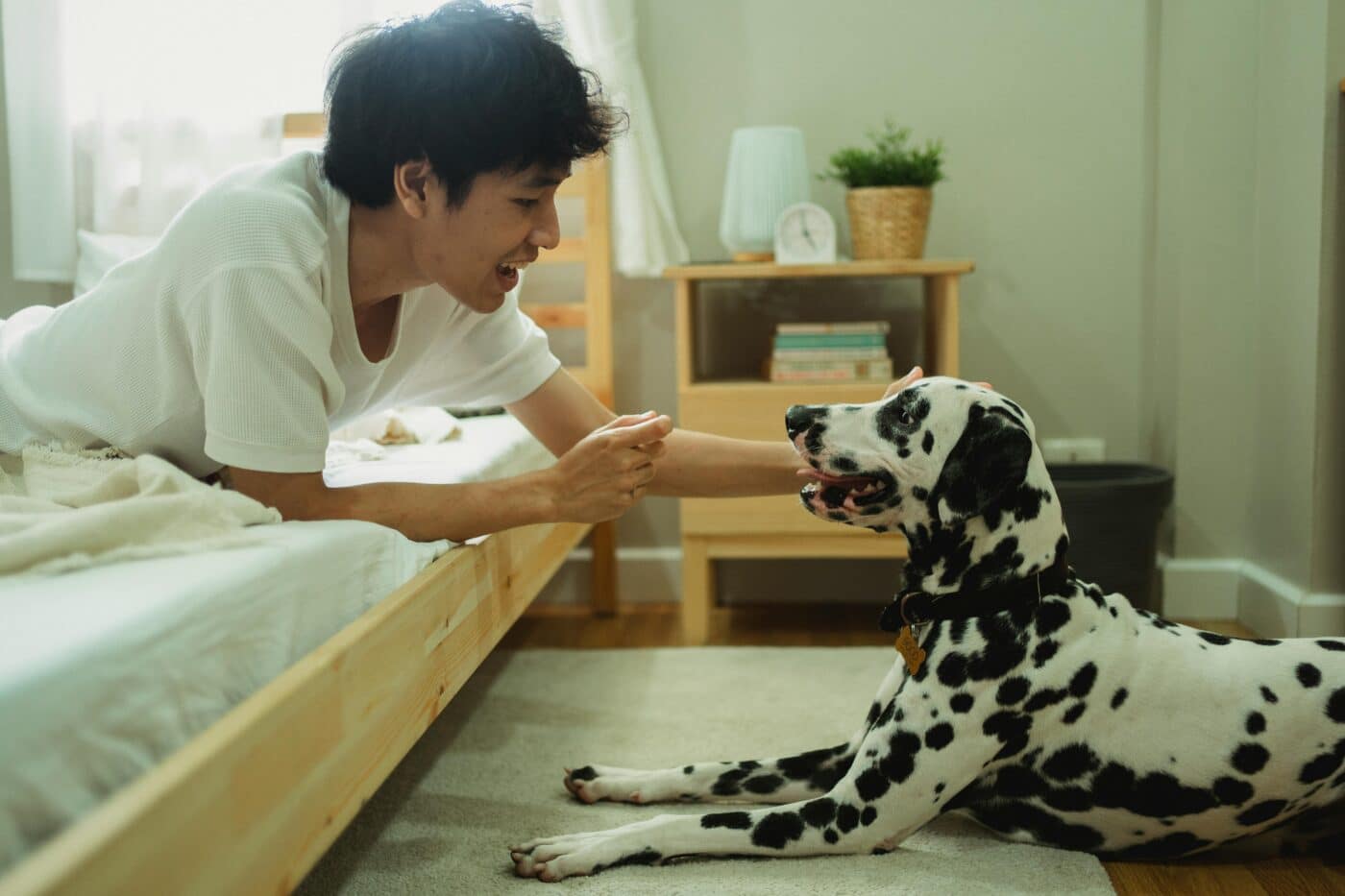 Shutterstock
Shutterstock
Dog training is key to fostering a positive relationship between pets and their owners. Unfortunately, many common myths about how dogs learn and behave can complicate the process. These misconceptions, often based on outdated advice or well-meaning but incorrect information, can lead to confusion and frustration. Worse, they may even harm your dog’s development. In this article, we’ll address and debunk some of the most persistent dog training myths with science-backed, effective methods for better communication and behavior. Let’s set the record straight!
Positive Reinforcement Is Only for “Easy” Dogs
 Shutterstock
Shutterstock
One of the most pervasive myths in dog training is that positive reinforcement is only effective for well-behaved or “easy” dogs. Many people mistakenly believe that positive reinforcement, like giving treats or praise for good behavior, works only with dogs that are already somewhat trained or naturally obedient. This idea couldn’t be further from the truth. Positive reinforcement is one of the most effective methods for training dogs of all temperaments, breeds, and ages. Even dogs with behavioral challenges respond well to this technique. Positive reinforcement works by rewarding desirable behaviors, which encourages the dog to repeat them. It creates a positive association with specific actions, which helps dogs learn new skills or improve their behavior.
You Should Punish Bad Behavior Immediately
 Shutterstock
Shutterstock
Another widely believed myth is that punishment for bad behavior must occur immediately to be effective. The idea here is that if you don’t correct a dog’s actions the moment they misbehave, they won’t understand what they did wrong. While it’s true that timing is important in dog training, immediate punishment is often less effective than it seems. Dogs don’t always connect a punishment with an action that happened seconds or minutes earlier. Instead of scolding a dog immediately after an unwanted behavior, it’s far more effective to redirect the behavior or reinforce good behavior consistently over time. Positive training strategies, like ignoring undesirable actions and focusing on rewarding good behavior, are far more effective in building a lasting bond and achieving long-term results.
All Dogs Can Be Trained to Do Anything
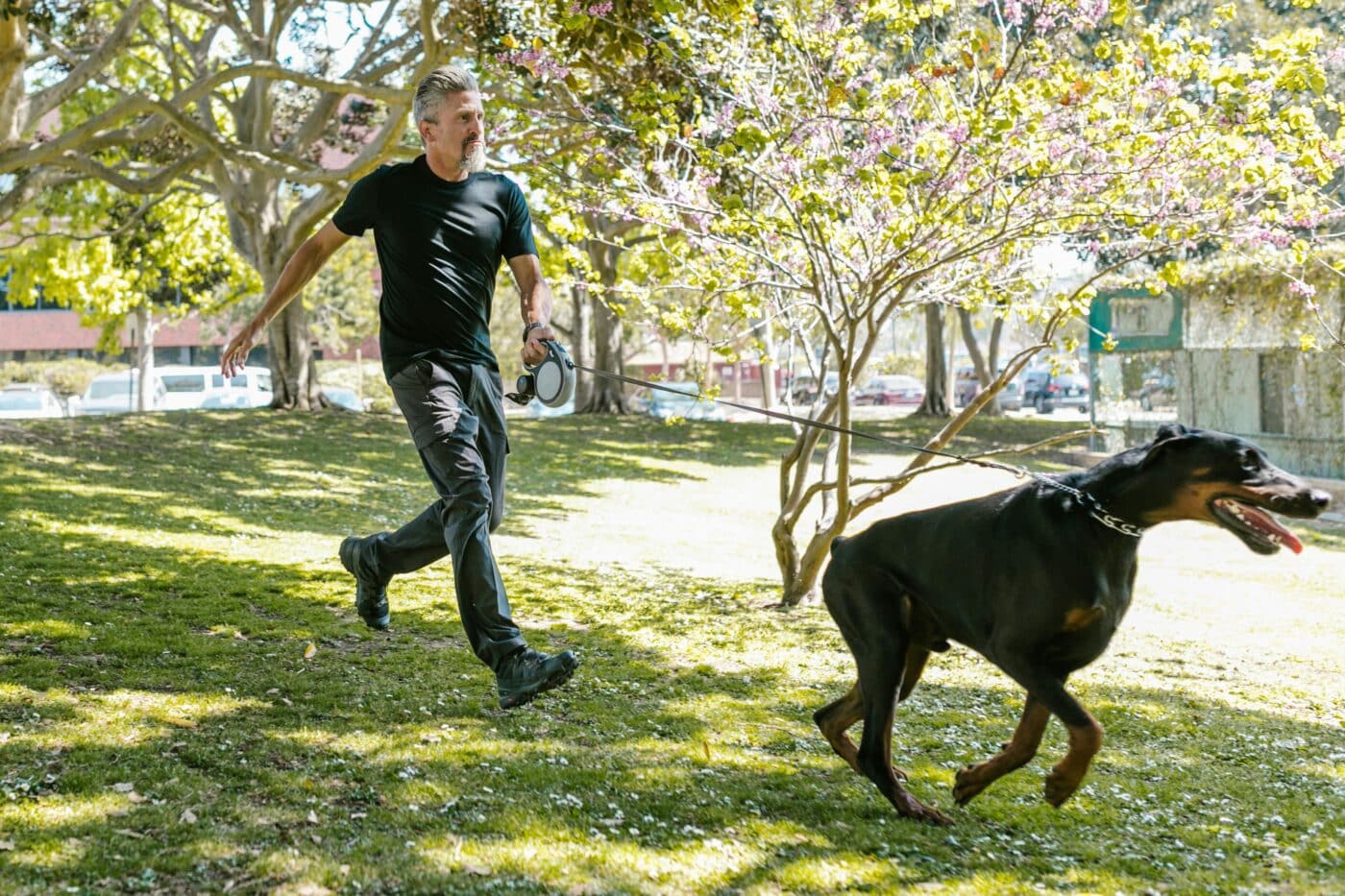 Shutterstock
Shutterstock
While it’s true that most dogs can learn a wide range of behaviors, the myth that all dogs can be trained to do anything is misleading. Each dog has its temperament, personality, and abilities, which can influence what they can or can’t learn. For example, some breeds are naturally more suited to certain tasks than others due to their history and instinctive traits. A Greyhound may not be the best dog for an agility course, while a Border Collie would excel. While all dogs can learn to obey basic commands and socialize appropriately, expecting every dog to become a champion obedience dog or perform complex tricks is unrealistic. Understanding each dog’s strengths and limitations is essential to effective training.
Your Dog Should Always Look You in the Eye to Show Respect
 Shutterstock
Shutterstock
Some trainers and dog owners believe that a dog’s willingness to make direct eye contact is a sign of respect and an important element of training. However, for many dogs, prolonged eye contact can be a sign of aggression or a challenge, especially with unfamiliar humans or in stressful situations. While some dogs may naturally enjoy eye contact and perceive it as bonding, others might feel threatened by intense stares. Instead of focusing on eye contact as a measure of respect, dog owners should prioritize creating a calm and comfortable training environment that respects the dog’s communication style. Building trust through positive reinforcement, consistency, and patience is a much better way to establish a respectful relationship with your dog.
Crate Training Is Cruel and Punitive
 Shutterstock
Shutterstock
Crate training has gained a reputation as a cruel practice, primarily due to misunderstandings about its purpose and implementation. Some people equate crates to cages or confinement, viewing them as punishment. However, when used correctly, crates are an incredibly useful tool in dog training, providing dogs with a safe, secure space to rest and sleep. Crate training taps into a dog’s natural den instincts, as dogs naturally seek small, enclosed spaces to feel safe. It is not about isolation but about giving dogs a space where they can relax and feel comfortable. Used properly, crate training can help with housebreaking, preventing destructive behavior, and promoting good sleep habits. Like any training tool, it should never be used as a punishment.
Older Dogs Can’t Be Trained
 Shutterstock
Shutterstock
There’s a misconception that older dogs are set in their ways and can’t be trained or taught new tricks. While older dogs may have established habits that take longer to break, they are still fully capable of learning new behaviors. Training an older dog might require more patience and consistency, but with the right approach, they can successfully learn commands, tricks, and behaviors. Training can provide mental stimulation and improve their quality of life as they age. It’s never too late to start teaching an old dog new tricks.
You Should Let Puppies Do Whatever They Want to Prevent “Rebellion”
 Shutterstock
Shutterstock
Many new dog owners believe that puppies should be allowed to do whatever they want in their early months to avoid “rebellion” or resistance to training later on. This myth suggests that strict rules or boundaries at a young age will cause the puppy to become defiant as they grow older. In reality, puppies benefit from learning boundaries and structure from the very beginning. Training early on helps puppies understand the rules and how to behave in a human household. Without this foundation, puppies may grow up confused and undisciplined, leading to more behavioral problems later. Starting training early doesn’t stifle their spirit; it helps guide them into well-adjusted adults.
All Dogs Can Be Socialized in the Same Way
 Shutterstock
Shutterstock
Socialization is crucial to a dog’s development, but not all dogs are socialized in the same way. Each dog has a unique temperament and tolerance for new experiences. Some dogs are naturally more outgoing and enjoy meeting new people and animals, while others may be shy or fearful. Forcing a dog into social situations before they are ready can lead to stress and anxiety. Proper socialization must be tailored to the individual dog’s needs and comfort level. Gradual exposure to new environments, people, and animals, along with positive reinforcement, can help dogs build confidence without overwhelming them.
You Should Never Let Your Dog Win
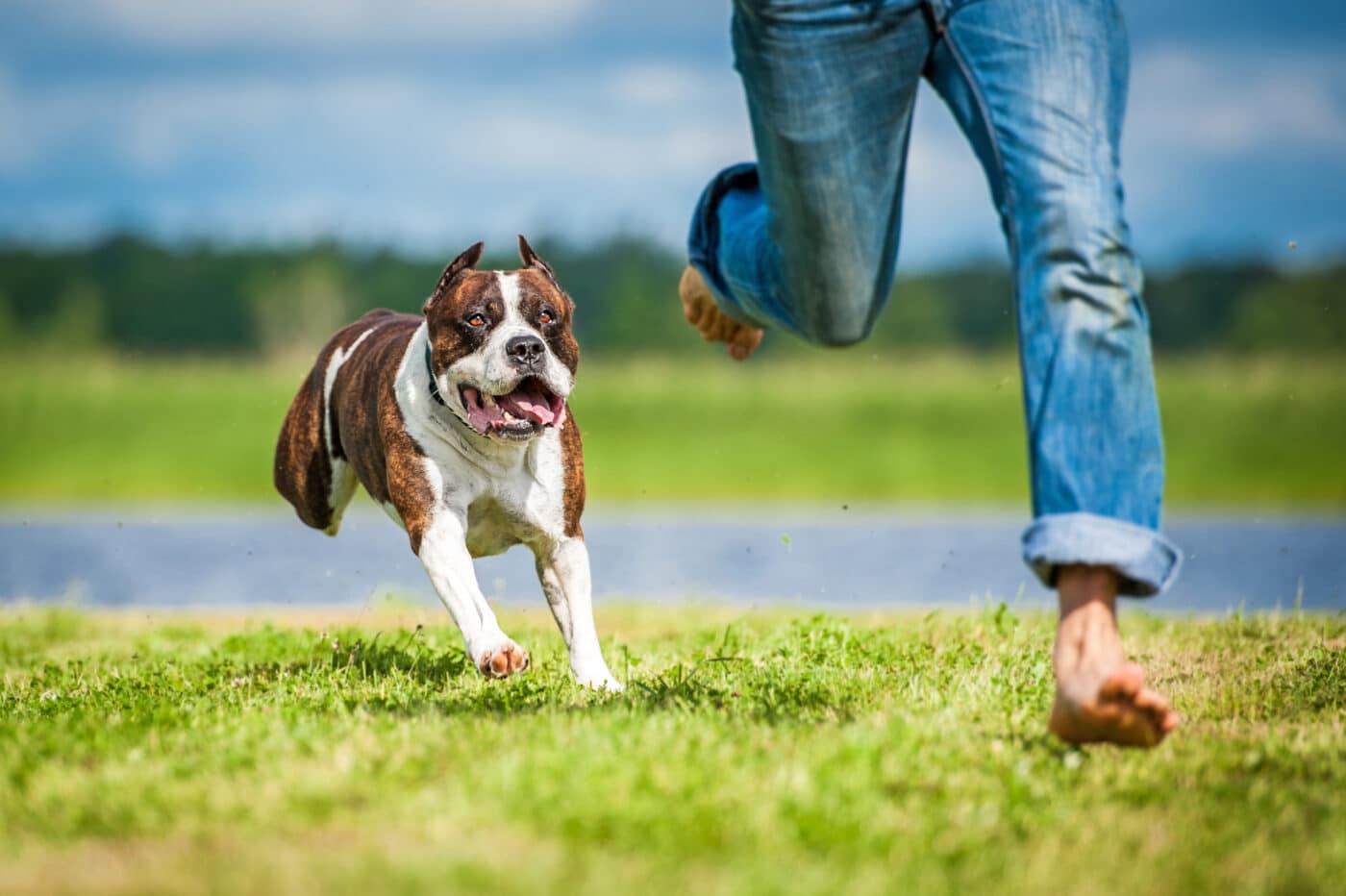 Shutterstock
Shutterstock
This myth often appears when people talk about dominance and training. The idea is that if a dog “wins” in a situation, it will assume the role of the “alpha” and become unruly or disobedient. However, modern dog training dismisses the outdated idea of dominance-based training. Dogs do not view human relationships through a lens of hierarchy in the way some myths suggest. Instead of focusing on “winning” or “losing,” training should emphasize mutual respect, cooperation, and understanding. When dogs are allowed to make choices within a controlled environment, it doesn’t undermine their respect for their owner—it builds trust and reinforces positive behaviors.
You Can’t Train a Dog Without Treats
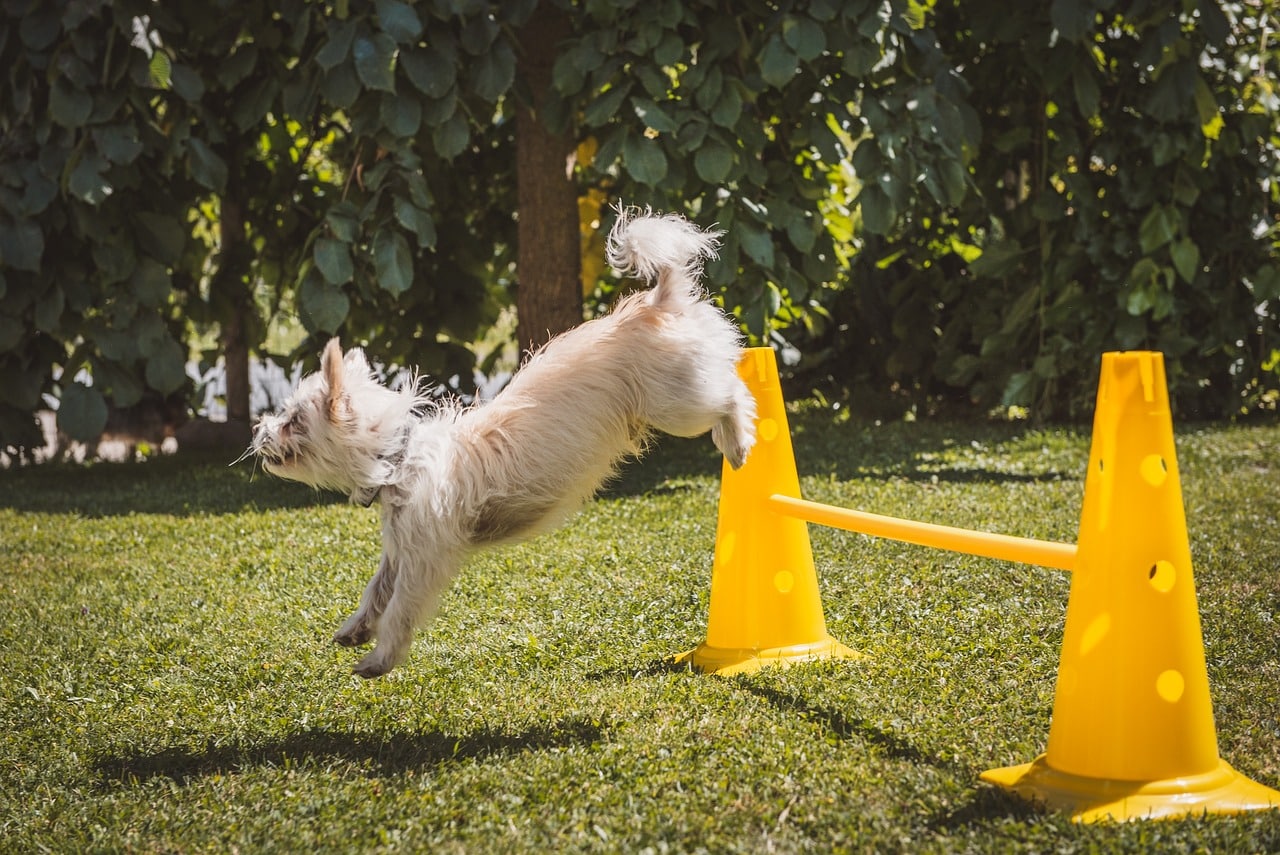 Shutterstock
Shutterstock
While treats are a great way to reward good behavior, the myth that treats are necessary for dog training is simply wrong. Some dogs are more motivated by toys, praise, or play than by food rewards. Additionally, as dogs mature, they can learn to respond to verbal cues, hand signals, and other forms of positive reinforcement. Relying solely on food treats can lead to problems if a dog becomes overly food-focused or refuses to work without a treat. The key to effective training is finding what motivates your dog and using that as a reward, whether it’s food, toys, or affection.
Training Should Be Done in Short Sessions
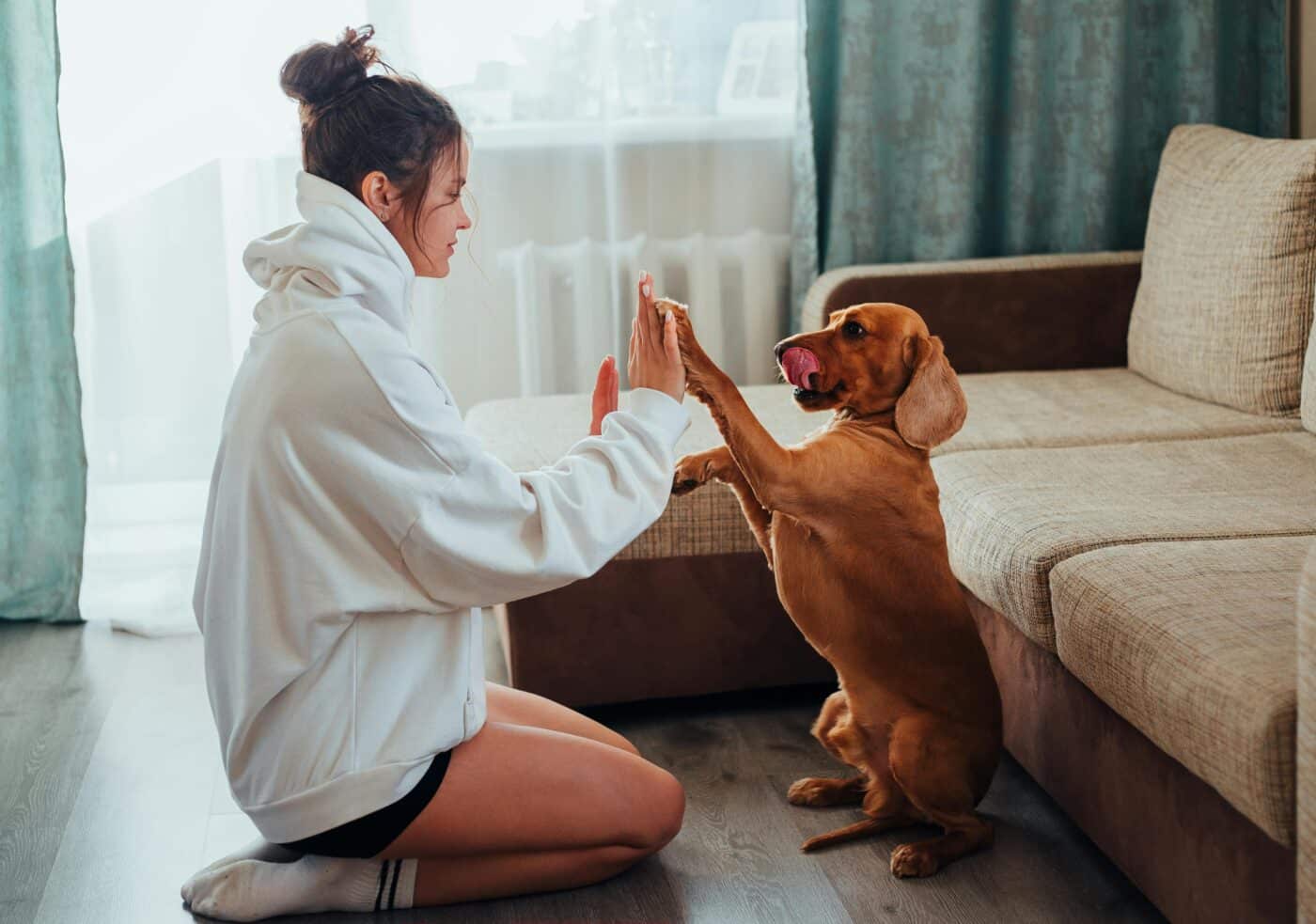 Shutterstock
Shutterstock
It’s common advice to keep training sessions short and sweet, typically under 10-15 minutes, to avoid overwhelming the dog. While shorter sessions can be helpful for puppies or dogs with shorter attention spans, it’s not a hard-and-fast rule. Some dogs, particularly older or more focused breeds, can handle longer sessions if they’re mentally engaged and rewarded appropriately. Conversely, some dogs may get frustrated or fatigued during long sessions, which can result in a decrease in learning. The most important factor is the dog’s attention span and level of motivation, not a strict time limit.
“Bad” Dogs Are Just Untrainable
 Shutterstock
Shutterstock
It’s easy to get frustrated with a dog that displays challenging behavior, but the myth that some dogs are simply “bad” and untrainable couldn’t be more wrong. Dogs, like people, have individual personalities and temperaments. Many so-called “bad” behaviors are signs of stress, fear, lack of socialization, or unmet needs. Most dogs are trainable with the right techniques and patience. If a dog is struggling with behavior, it’s important to look at the underlying causes and adjust the training approach accordingly. With consistency, understanding, and the right tools, most dogs can learn to exhibit good behavior.
Training Should Be Fast for Quick Results
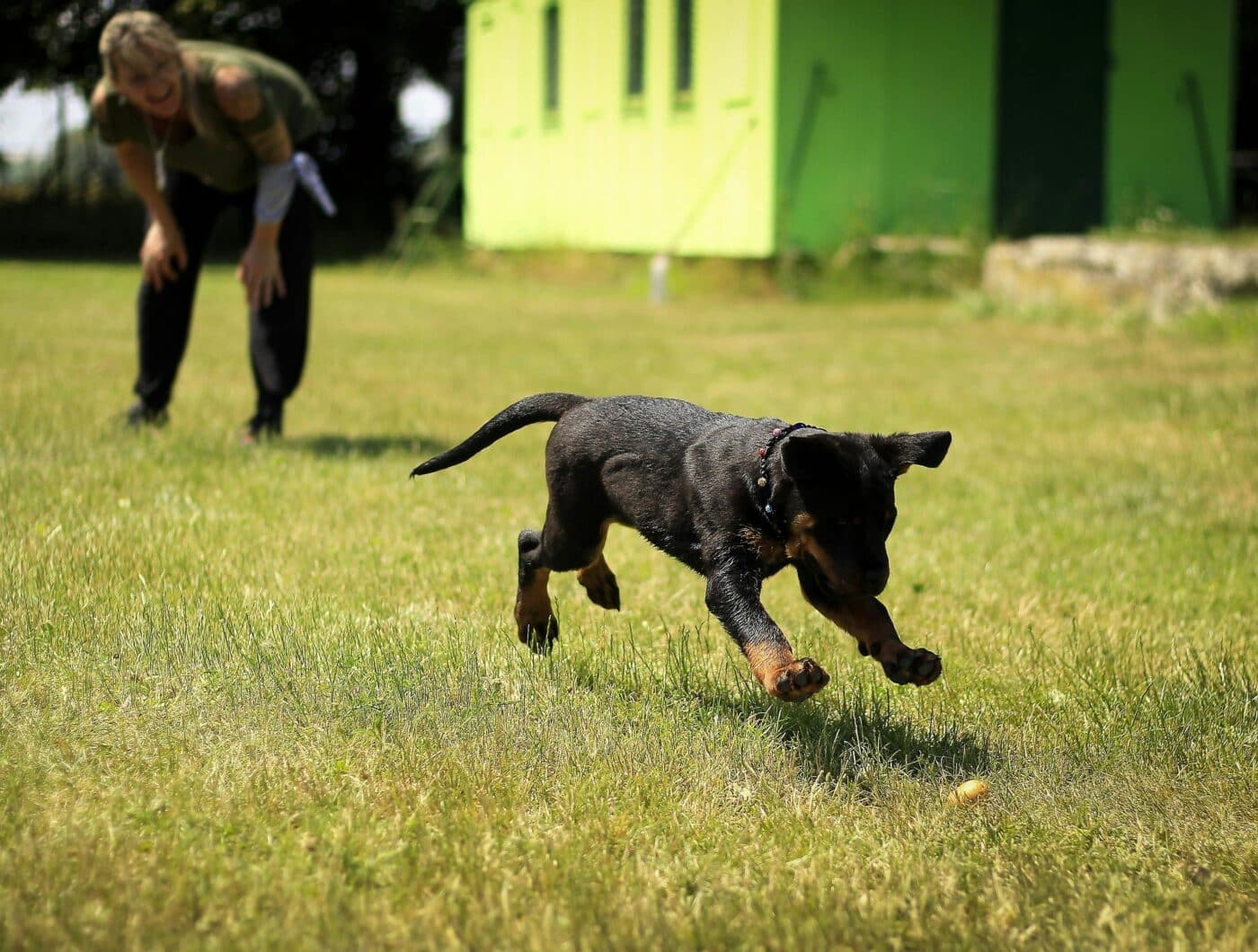 Shutterstock
Shutterstock
Expecting fast results from dog training is another common myth. While some behaviors may be learned quickly, most dog training takes time and consistency. Dogs don’t typically learn new behaviors in a few days or weeks, and owners need to set realistic expectations. Training is a process that involves repetition, reinforcement, and gradual progress. Dogs need time to understand and internalize what is expected of them. Trying to rush the process often leads to frustration for both the dog and the owner. Patience, consistency, and time are essential to achieving lasting results.
The Tail-End Truths About Dog Training Myths
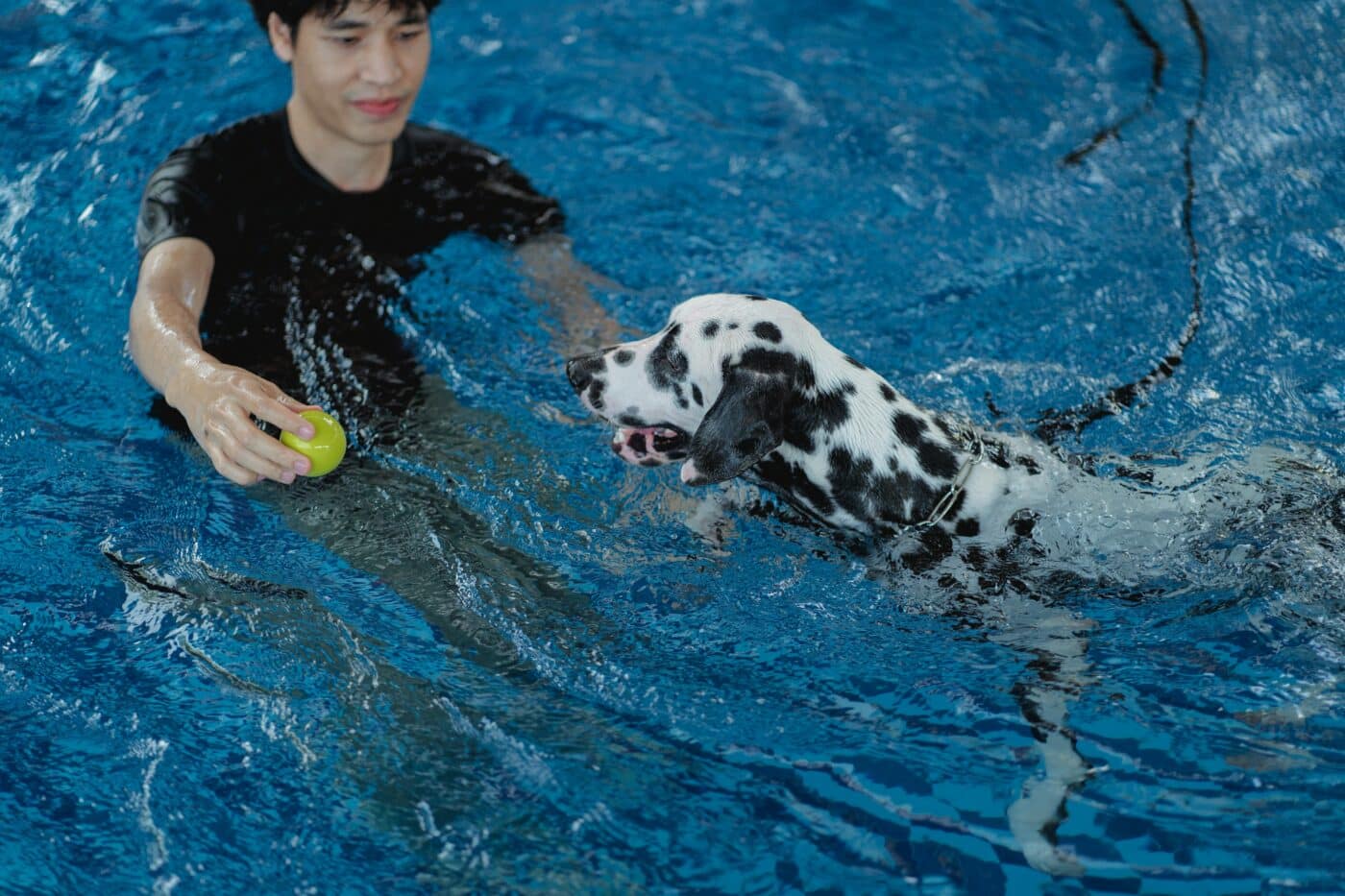 Shutterstock
Shutterstock
Well, folks, we’ve busted a whole slew of myths that have likely been circulating since your great-grandparents’ time. From the idea that crate training is cruel (spoiler: it’s not) to the myth that you can’t teach an old dog new tricks (you can!), we need to stop believing everything we hear about dog training. The most important takeaway? Each dog is unique, and training should be tailored to their specific needs, temperaments, and abilities. So, next time you hear a dog training myth, just remember to pause, think critically, and maybe double-check with an expert. The best training comes from understanding, patience, and a little less myth-busting!
 Toledo, United States.
Toledo, United States.